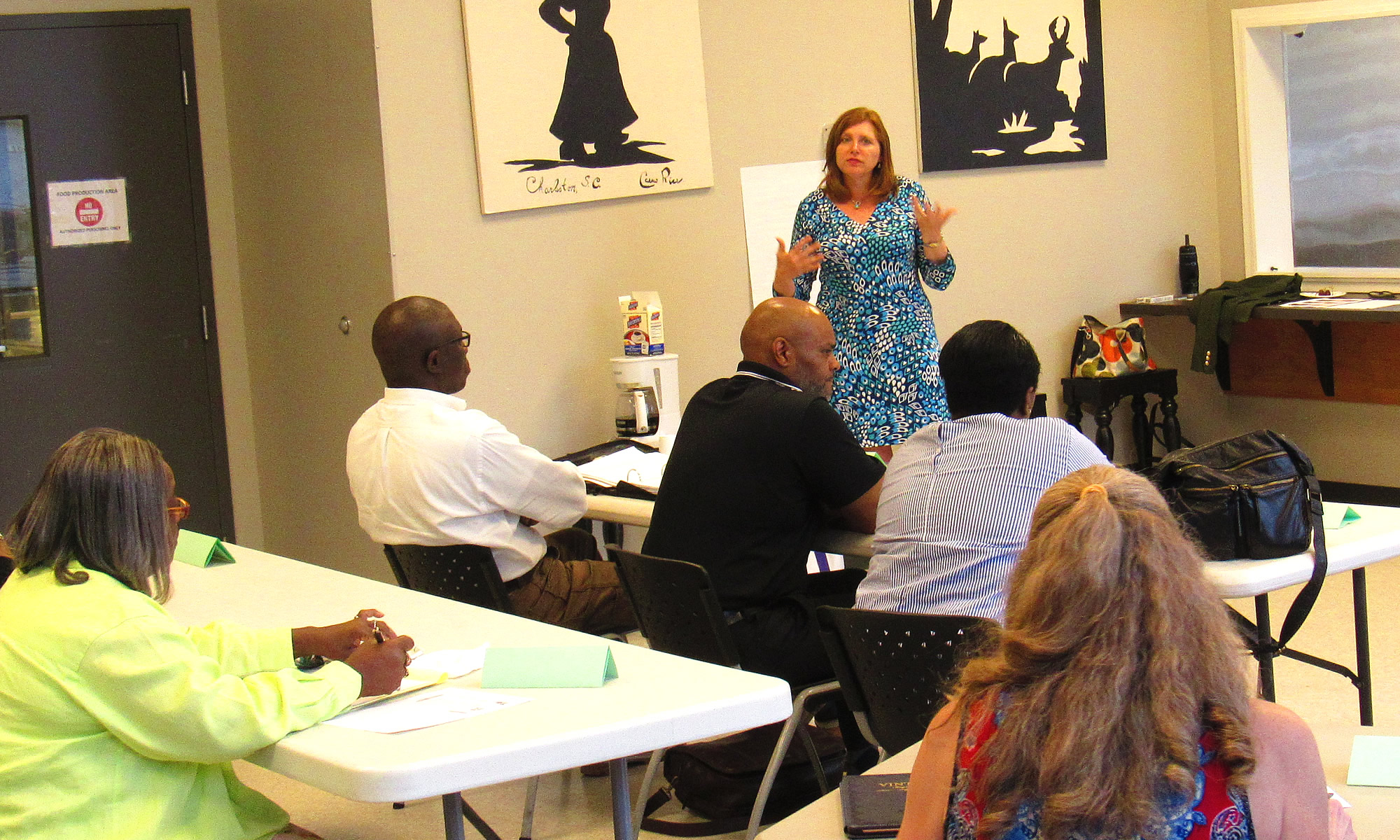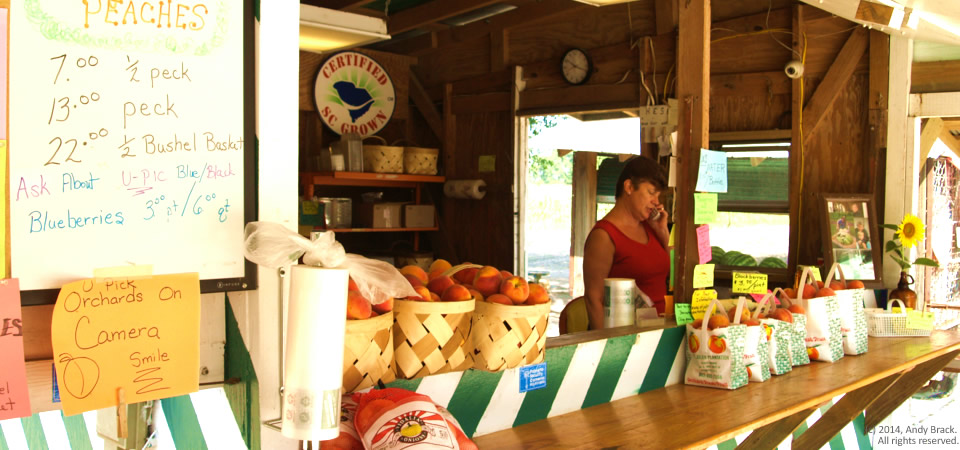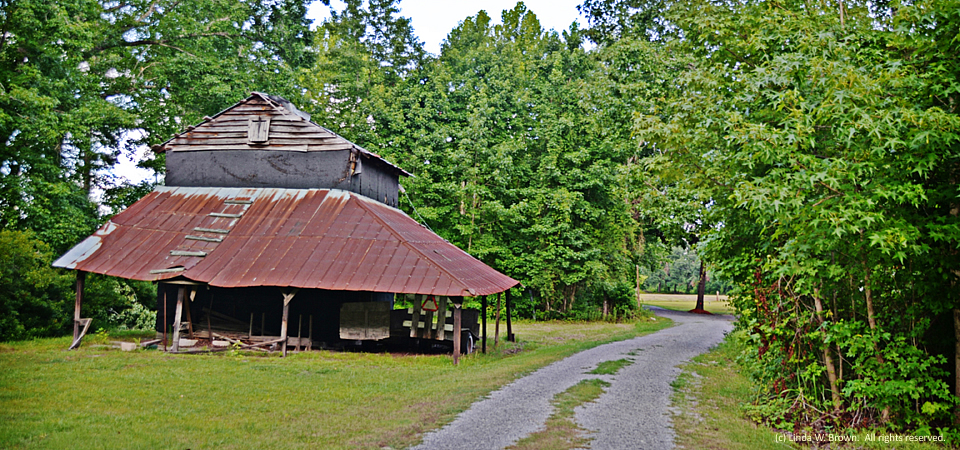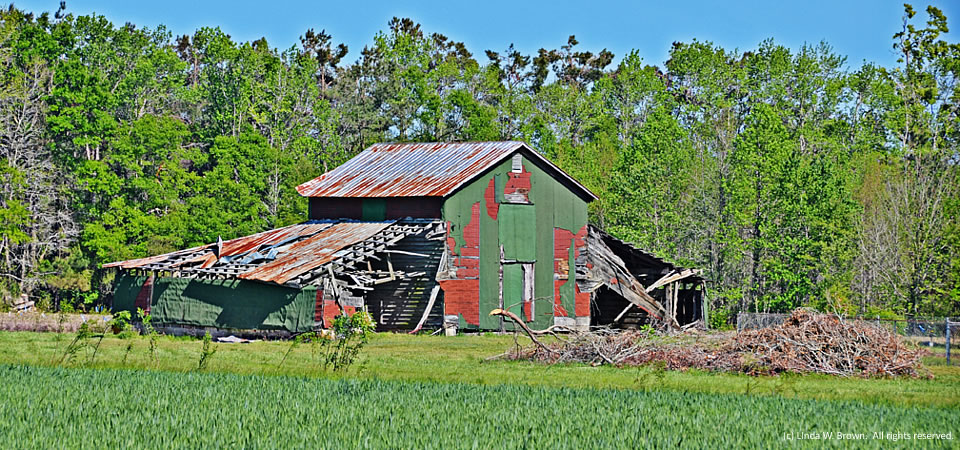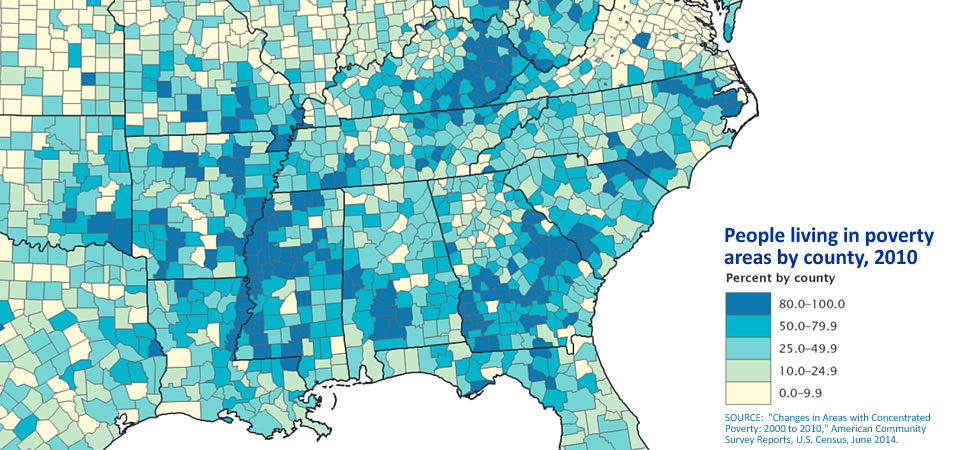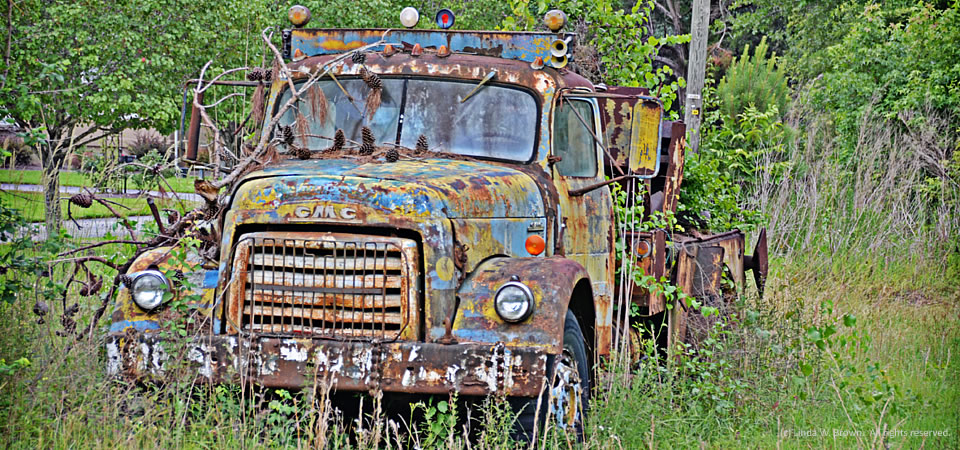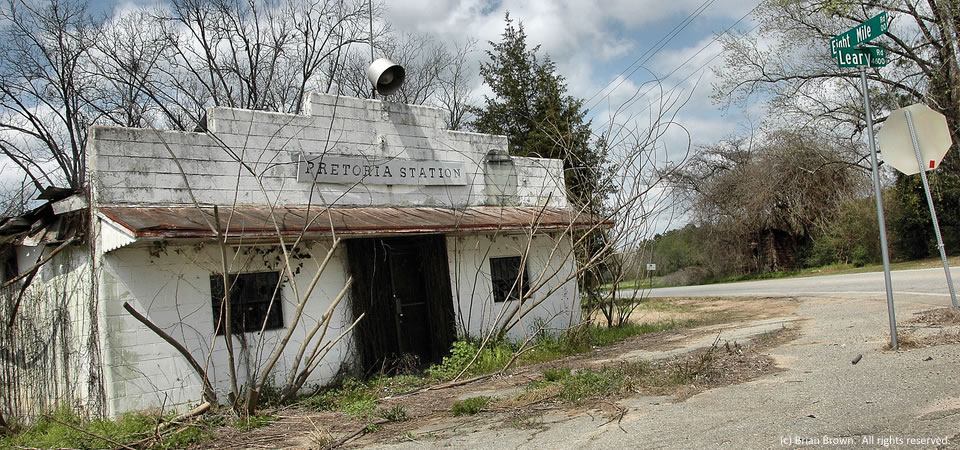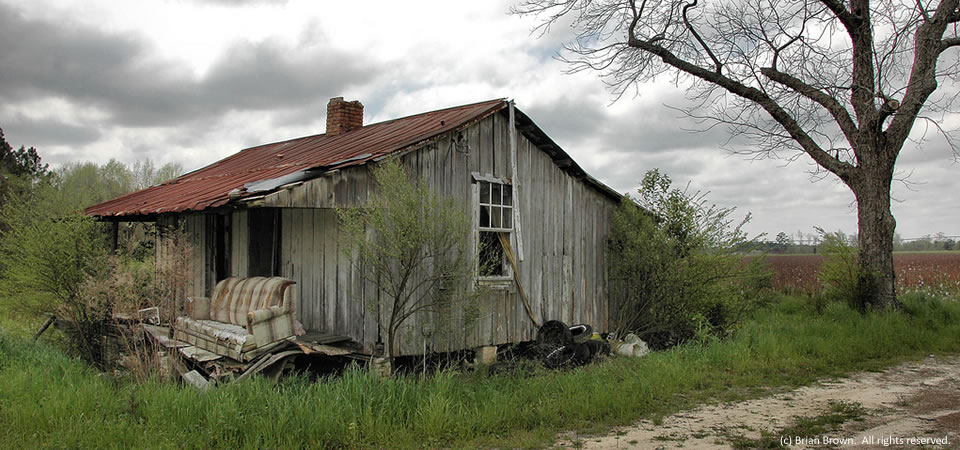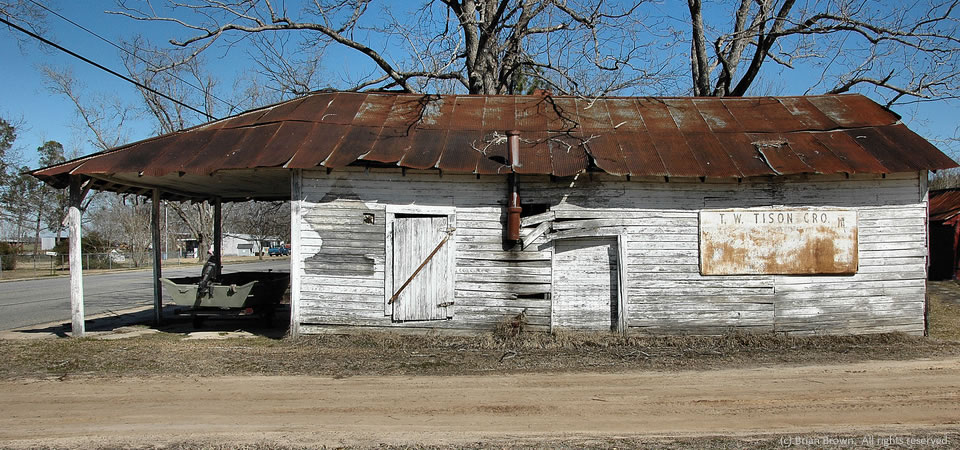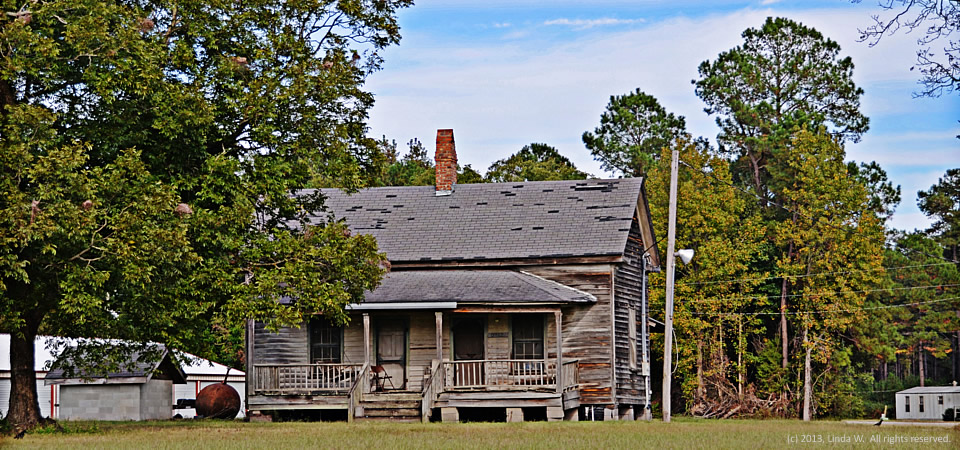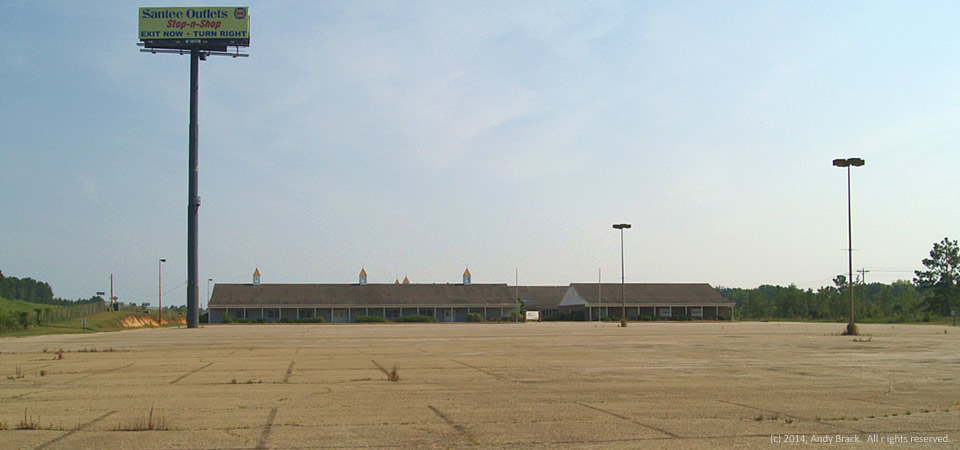
Santee Outlets used to be a thriving outlet village in the small town of Santee, S.C., along Interstate 95 in the middle of a real dull drive between Savannah, Ga., and Florence, S.C. Now, however, the facility — once home to about four dozen stores — houses an antiques store and a sheriff’s department substation. A parking lot that could fit hundreds of cars is empty with weeds and broken glass as its only occupants.
While small shops and fast-food restaurants thrive at the Santee exit, small businesses like those in the outlet took a big hit in the Great Recession. Santee, home to about 750 people, is in the eastern part of Orangeburg County near Lake Marion. Orangeburg County is home to more than 91,000 people, two thirds of whom are black. The county has a poverty rate of 24.5 percent.
Copyrighted photo was taken July 9, 2014 by Andy Brack. All rights reserved.
